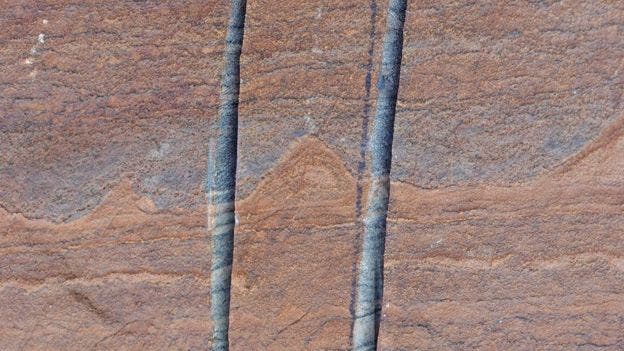Locked in Greenland rocks dated from 3.7 billion years ago, scientists discovered the oldest physical evidence of life on the planet. What the researchers found was not fossilized life, but rather telltale structures carved in the rock by bacteria called stromatolites, sort of like a footprint.
Pushing ancient life farther in time than ever before
If the findings are confirmed by other independent researchers, these stromatolites would be 220 million years older than the previous record-holder, also stromatolites but found in Western Australia. These structures are made by microbial communities which trap and bind sediment or attract carbonate from surrounding water. The algae or bacteria that build these thin layers can’t be found, but their presence can be marked for billion of years onward.
We don’t know which kind of bacteria or the type of organism, for that matter, that formed the stromatolites. What we know for sure is that these ancient organisms, perhaps the earliest we can infer so far, were water-based since it would be impossible for the sediments to form otherwise.
These were unearthed from the Isua supracrustal belt in southwest Greenland by a team of Australian and US researchers. The site is home to some of the oldest rocks ever, some extending up to 4.2 billion years.
Isua rocks are metamorphic — sedimentary rocks subjected to extreme temperature and pressure. Typically, these conditions deform the original rock so everyone was very surprised to find stromatolites etched inside them. At the same time, critics are concerned that the metamorphic conditions have altered the fossil too.
Yet, if what we’re seeing now is confirmed, the story of life on Earth might become a whole lot richer and interesting. Studies which backtracked the evolutionary lineage to its very origin suggest that life first surfaced some four billion years ago, or half a billion years after the Earth coalesced into what you’d call a planet. The Greenland rocks seem to support this hypothesis.
“This idea of the Earth as being bombarded by meteorites and, basically, volcanoes and [having] no water, has kind of evaporated so now we have a rather modern-looking planet with global oceans and some land going back several hundred million years before these fossils were found,” said Nick Lane, an evolutionary biochemist from University College, London, for The Guardian.
“This is really just another piece of evidence that suggests that the world was far more comfortable, if you like, for life as we know it on a global scale than you would perhaps read in even quite recent books,” he added.
The findings published in Nature could also aid scientists in their quest to discover signs of life on other planets, particularly on Mars. About the same time these Greenland layered rocks formed, our neighboring red planet was wet and warm — basically a habitable planet for all we know. As such, looking for stromatolites might be our best bet so far, especially since these ought to be far better preserved than on Earth since Mars lacks plate tectonics and hence isn’t subjected to the same destructive geological processes.










